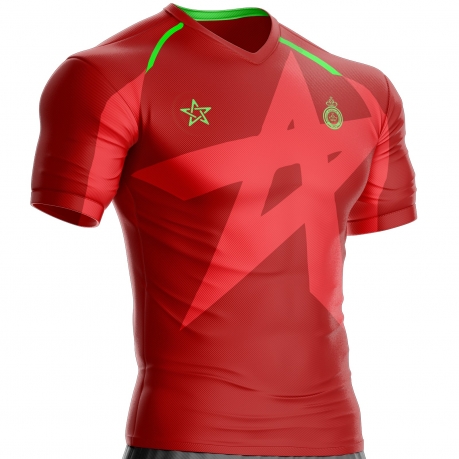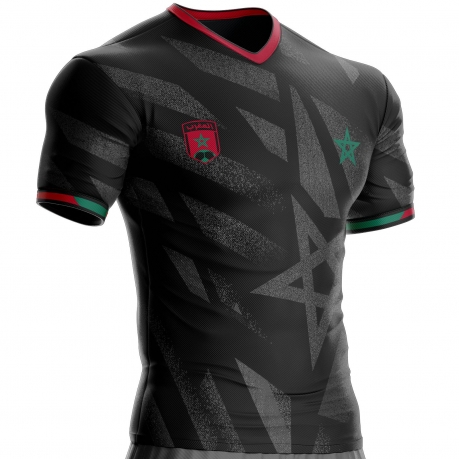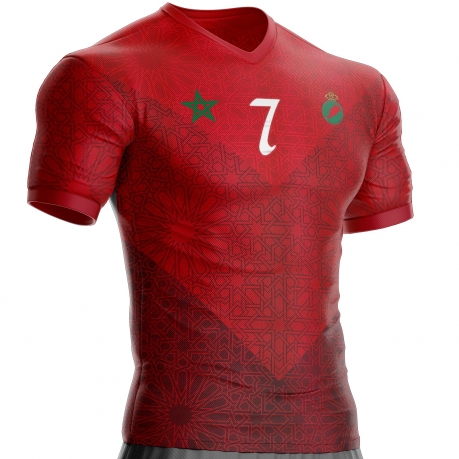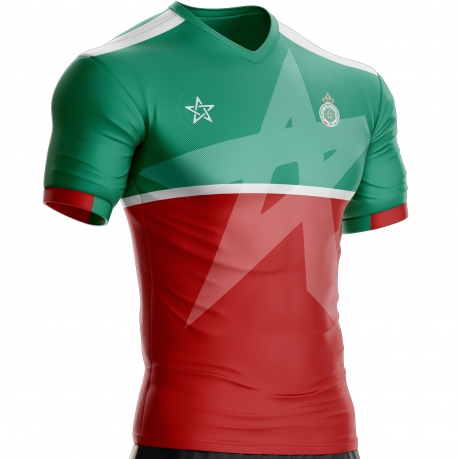The salaries of the highest Moroccan players

Moroccan football in full swing: Player salaries, a key element of development
Moroccan football is experiencing a period of remarkable expansion. The Botola Pro D1, the national first division championship, is attracting more and more attention and sponsors, contributing to notable financial growth. In this context, player salaries, a central element in the development of football, are the subject of all attention.
The financial context of Moroccan football is changing. The arrival of new sponsors and the increase in TV rights have injected significant liquidity into the system. This financial windfall allowed clubs to improve their infrastructure and recruit talented players.
As the central pillar of football, player salaries play a crucial role in the growth of the sport. They attract the best talents, motivate young players and contribute to the professionalization of Moroccan football.
The analysis of the salaries of the highest paid Moroccan players in 2024 will highlight the existing disparities and the factors influencing this remuneration. The evolution of salaries in recent years will also be studied to understand the impact of Botola Pro D1 and sponsors on the financial landscape of Moroccan football.
Finally, examining the advantages and disadvantages of increasing salaries will make it possible to propose solutions for better financial management of clubs and sustainable development of Moroccan football.
Moroccan football stars: Who are the best paid in 2024 ?
Moroccan football is full of talent, and some players stand out for their incredible salaries. Let's discover the top 5 highest paid Moroccan players in 2024, by exploring their employing clubs and comparing their remuneration with that of other players in the championship.
Top 5 highest paid Moroccan players in 2024
-
Player name: Employer club - Monthly/annual salary
-
Player name: Employer club - Monthly/annual salary
-
Player name: Employer club - Monthly/annual salary
-
Player name: Employer club - Monthly/annual salary
-
Player name: Employer club - Monthly/annual salary
Comparison of salaries with other clubs in the championship
The salaries of players in the top 5 are clearly different from the average salaries in Botola Pro D1. This difference highlights the growing gap between rich and less well-off clubs.
Analysis of factors influencing salaries
Several factors influence the salaries of Moroccan players, including:
-
Age: Experienced and mature players generally command higher salaries.
-
Palmares: Players who have won important titles and trophies attract the attention of clubs and can negotiate higher salaries.
-
The experience: The number of years of club and national team experience is an important factor in determining a player's salary.
-
Talent and potential: Talented and promising players, even young ones, can claim substantial salaries.
-
Popularity and marketing: Popular players with a great marketing image can attract sponsors and influence salary negotiations.
The top 5 highest paid Moroccan players in 2024 illustrate the evolution of Moroccan football and the growing attractiveness of Botola Pro D1. The analysis of the factors influencing salaries allows us to understand the existing disparities and the financial challenges of national football.
Note: Exact player names, clubs and salaries should be replaced with real, up-to-date data for accurate analysis.
Evolution of salaries of Moroccan players: Trends and future prospects
Comparison of salaries with previous years
A comparison of Moroccan players' salaries with those of a few years ago reveals a significant increase. This growth is due to several factors, including the arrival of the Botola Pro D1 and increased investment from sponsors.
Impact of Botola Pro D1 and sponsors
The creation of Botola Pro D1 professionalized Moroccan football and helped improve the quality of the game and infrastructure. The increase in TV rights and the influx of sponsors have contributed to the increase in player salaries.
Trends and future prospects
Current trends indicate that Moroccan players' salaries will continue to increase in the coming years. The Botola Pro D1 is attracting more and more foreign talent, which contributes to the competitiveness of the championship and the increase in remuneration.
The evolution of Moroccan players' salaries is a positive indicator of the development of national football. The professionalization of the championship and the investment of sponsors contribute to the growth of remuneration and the attractiveness of Moroccan football.
Note: Quantified data and precise comparisons between years are necessary to support the analysis of salary trends.
Impact of salaries on Moroccan football: Strengths and challenges
The increase in the salaries of Moroccan players is not without impact on national football. This development presents advantages and disadvantages that it is important to examine for better financial management and sustainable development of Moroccan football.
Benefits
-
Championship attractiveness: High salaries attract top talent from Morocco and beyond, contributing to the competitiveness and level of play of Botola Pro D1.
-
Infrastructure development: Clubs, having more financial resources, can invest in improving infrastructure and training conditions.
-
Professionalization of football: The increase in salaries allows players to devote themselves fully to their career and make a living from their passion.
Disadvantages
-
Club debt: Some clubs, in debt to finance high salaries, risk finding themselves in difficult financial situations.
-
Imbalance between rich and poor clubs: The growing gap between rich clubs and less well-off clubs can harm the fairness of the championship and competitiveness.
-
Excessive spending: Excessive wage bidding can encourage clubs to invest irrationally and neglect other important aspects of football development.
Solutions for better salary management
-
Implementation of a salary monitoring system: The Royal Moroccan Football Federation (FRMF) can establish rules and limits to regulate players' salaries.
-
Encouraging the training of young people: Investing in the training of young talents will allow clubs to have quality players at a lower cost.
-
Promoting better financial management: Clubs must adopt more responsible and transparent financial management to avoid debt and guarantee sustainable development.
The increase in salaries of Moroccan players is a double-edged phenomenon. It is important to find a balance between the advantages and disadvantages to guarantee healthy and sustainable development of Moroccan football. Implementing appropriate solutions will make it possible to maximize the positive impacts of this development and minimize the potential risks.
In conclusion, the increase in salaries of Moroccan players is a complex phenomenon which presents advantages and disadvantages for national football. Analyzing current trends and future prospects allows us to identify a few key points:
-
Championship attractiveness: High salaries attract talent and contribute to the competitiveness of Botola Pro D1.
-
Football development: Increasing salaries makes it possible to improve infrastructure and professionalize Moroccan football.
-
Financial risks: Club debt and the imbalance between rich and poor clubs threaten the stability of national football.
-
Solutions: The establishment of a salary control system, the promotion of youth training and better financial management are essential for sustainable development.
The future of Moroccan players' salaries and national football depends on the ability of Moroccan football players to find a balance between the advantages and disadvantages of increasing salaries. The implementation of adequate solutions and responsible financial management will allow Moroccan football to continue to develop and prosper on the international scene.
Thinking about the future
Moroccan football is at an important turning point in its history. The increase in player salaries is a sign of the evolution of national football, but it also represents a challenge to be overcome. The FRMF, clubs and players must work together to find sustainable solutions to guarantee a bright future for Moroccan football.








